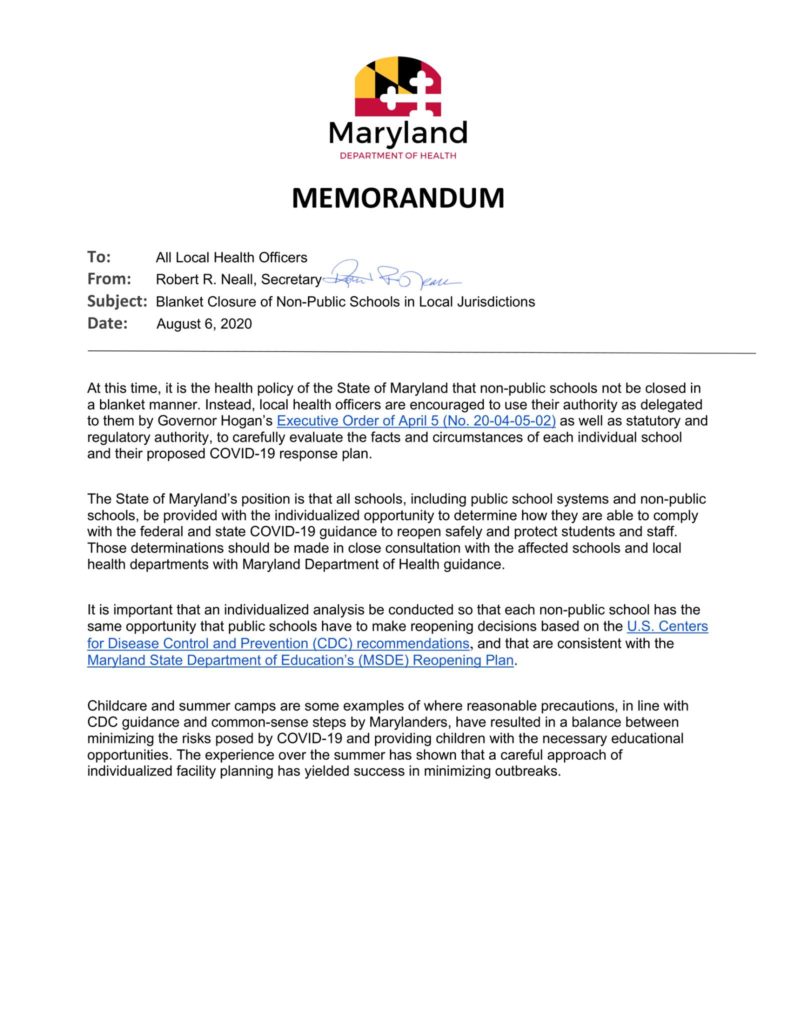By Adam Pagnuccco.
Montgomery County health officer Travis Gayles just issued a new order rescinding his recent order shutting down MoCo private schools for in-person instruction. Gayles’s new order states, “I, Travis A. Gayles, M.D., Ph.D., Health Officer for Montgomery County, Maryland, despite believing that it is necessary to close nonpublic schools for in person instruction to protect the public, do hereby, pursuant to the August 6, 2020 Memorandum issued by the Secretary of the Maryland Department of Health, rescind the August 5, 2020 Health Officer Directive Regarding Nonpublic Schools.”
That doesn’t mean private schools can do whatever they want. The state’s memorandum says that private school reopenings should be done in “close consultation” with local health departments using guidance from the state health department. That means there is still a role for regulation. But MoCo has conceded that there won’t be a blanket shutdown.
The county’s press release appears below.
*****
Health Order Prohibiting Nonpublic Schools Rescinded by Montgomery County Health Officer
For Immediate Release: Friday, August 7, 2020
Reemphasizing the need to protect the health and safety of Montgomery County residents as well as parents, students, teachers and staff from the spread of COVID-19, County Health Officer Dr. Travis Gayles today announced that he has rescinded his health order that prohibited nonpublic schools from opening for in-person instruction until after Oct. 1, 2020. The decision was made due to the new policy announced yesterday by the State Department of Health prohibiting the blanket closure of nonpublic schools.
Today’s new Health Officer Directive and Order regarding public, private and independent schools, dated Aug. 7, 2020, is effective immediately and rescinds the order dated Aug 5, 2020.
The Health Officer continues to strongly advise schools against in-person learning due to the risks posed by COVID-19 and has asked that the Department of Health provide articulable criteria to be used in determining acceptable and safe levels of activity in schools.

